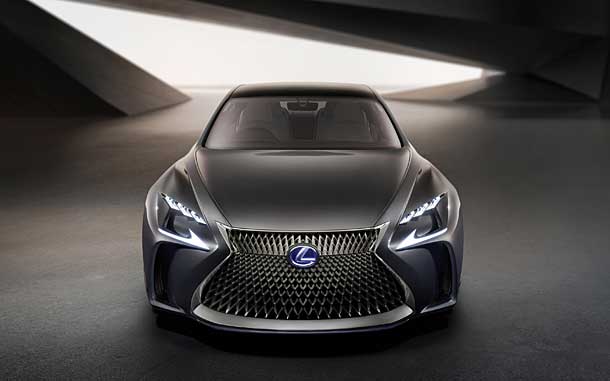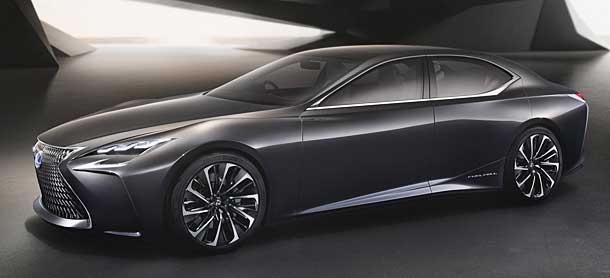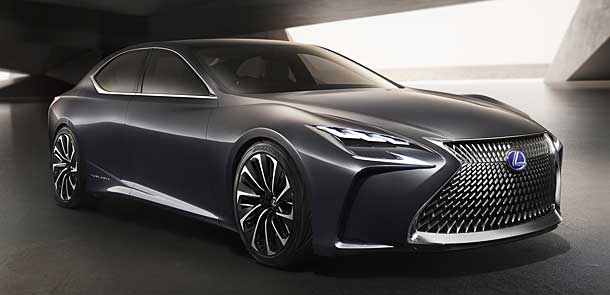
Lexus LF-FC Review
Unveiled at the 2015 Tokyo Motor Show during the last quarter of last year, the Lexus LF-FC flagship concept is a preview of the next generation hydrogen-powered sports cars from luxury vehicle divisibeen known for but is bigger than the current LS generation. The exterior has evolved with a body four inches longer and wider but two inches lower than the existing LS sedan.
Its lower stance and wider body are complemented by an interesting grille with a new mesh design with floating “L-shaped” daytime running lights (DRL). The LF-FC also sports aluminum wheels with carbon fiber plastic rims and the tail lights are bigger and bolder. The roofline flows from the front to the back with a slight slope that gives it the “four-door coupe” look.
The inside of the Lexus LF-FC is where technology and concept are highlighted. Aside from a spacious cabin, it also has an infotainment system which can be controlled by hand gestures. There is a small holographic image on the center console to direct these gestures for ventilation and audio control.

Albeit the interior has a futuristic design, it also has a touch of practicality on it with the seats, dashboard and doors covered with high-quality leather and a mix of wood and leather materials. Rear passengers can enjoy the reclining bucket seats, pop-out foot rests, bigger legroom and touch screen interface while the driver can concentrate on the road with a highly functional cockpit. The dashboard is equipped with a digital instrumentation where most of the information is displayed.
Another interesting feature of the LF-FC is its centrally located, T-shaped hydrogen fuel tank with a set of electric motors in the front and fuel cell powertrain at the back. It sends power to the two in-wheel motors while energizing the rear wheels. Its design adds to the vehicle’s dynamics when it comes to handling and its stability on the road even for a full-size sedan. The placement and design of the drive system makes it possible for the torque to evenly be distributed to all four wheels.
This sedan’s hybrid powertrain can also be operated in two driving modes. While in cruising mode, electricity is created by the fuel cell stack to recharge the battery and drive the motor. Conversely, while in acceleration mode, the main electric motor of the car as well as its in-wheel electric motors is powered by the fuel cell stack and the battery.

With the application of automated driving technology, it has elevated traffic environment recognition as well as prediction and judgment functions, for an efficient and safe driving experience.
The Lexus LF line includes concept vehicle series of convertibles and coupes with the LF-X as the first concept vehicle introduced in 2003. Since then several concept vehicles followed, including the LF-FC coupe.